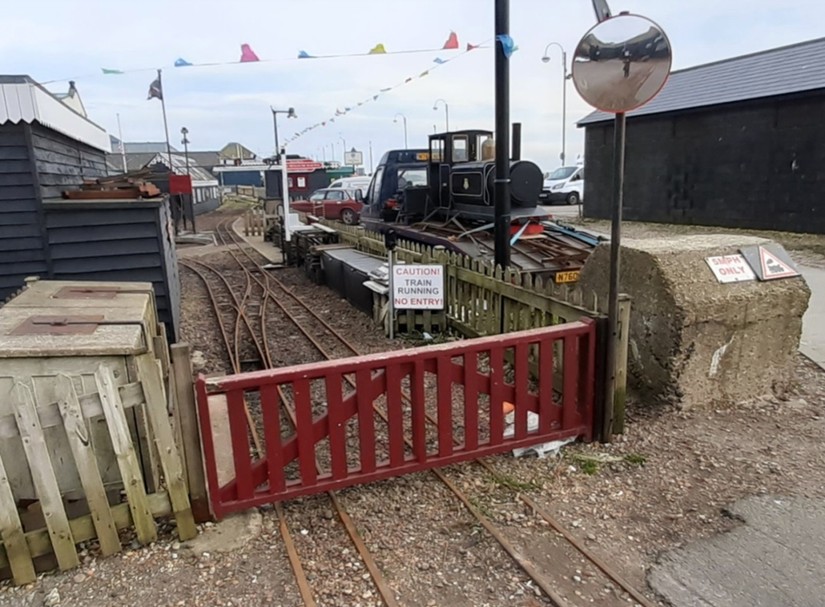TANK TRAPS, TRAINS & TOURISTS: Hastings in WW2
22/06/2021 | Gus Milne
TANK TRAPS, TRAINS & TOURISTS: Hastings in WW2
“We’ll Fight Them on the Beaches…”
With the Fall of France in June 1940, everything changed. Overnight, quiet seaside towns on the south coast of England found themselves in the front line: German bombers were now just minutes away and a full-blown seaborne invasion by the enemy army was an all too real prospect. The armoured tanks of the German Panzer divisions had just overrun the Low Countries and France in a matter of weeks: what if they could be transported across the narrow channel and landed on the wide open beaches of Kent or Sussex? What could stop them carving a similarly devastating path deep into the heart of England?
Plans were hurriedly made and rapidly executed on a scale commensurate with that awful challenge. First, the children evacuated from London to the assumed safety of south coast resorts such as Hastings were re-evacuated to significantly more distant destinations. Then the beaches were fortified with a range of obstacles to obstruct the imminent seaborne invasion, hopefully for long enough to allow regular army units to be rapidly deployed to repel the invaders. Much of the coastline became a secured military zone, protected by gun emplacements, miles of barbed wire and minefields. And to impede the progress of those dreaded Panzer divisions, the most vulnerable beaches and coastal roads were sown with line after line of concrete blocks: when cast, each one just over 1m tall and 1m wide. They are known as tank traps.

TANK TRAPS: on this Luftwaffe photo taken on 23/10/1940, you can just make out up to three rows of closely-spaced concrete blocks (above dotted line) stretching the length of Hastings seafront: gun emplacements are also marked up (CBA Defence of Britain Archive).
Note the shadows of the few remaining fishing boats drawn up above the high tide line. Many of the younger fishermen had joined the armed services, and no night-fishing (eg large-scale drifting) was allowed, but fishing in daylight attracted the machine guns of enemy aircraft, while German mines destroyed three of the fleet (RX198, RX152 and RX61).
ERADICATING HISTORY
We now know that the nightmare of a German invasion never happened here: but for the people of Hastings, who endured over 80 air-raids, the ominous threat was ever present. Indeed, it was not until 1946 that the lines of concrete tank traps were removed, as this picture (left) shows.
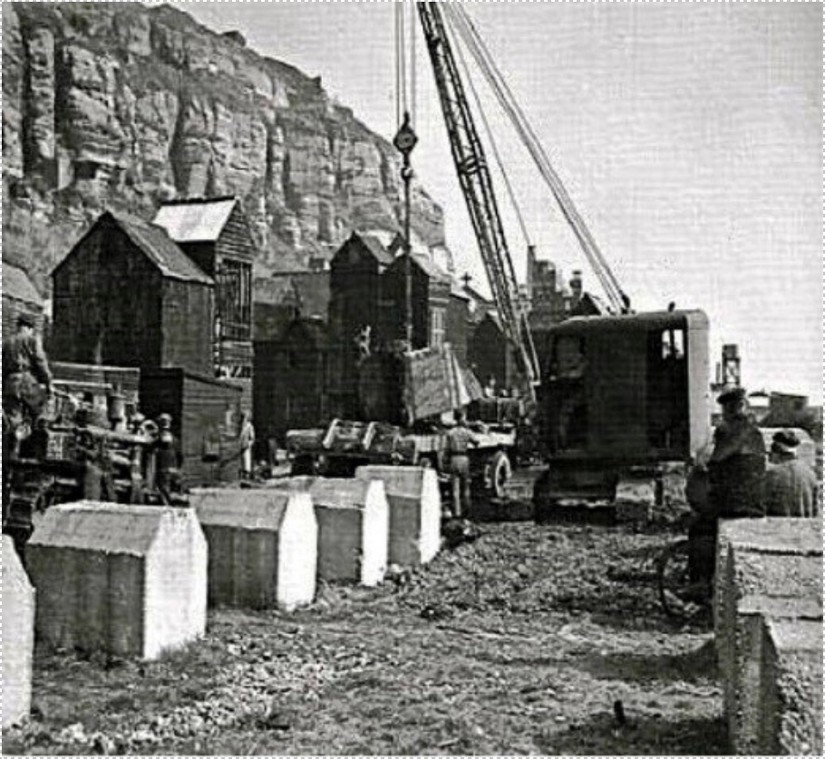
But what happened to all those blocks? Many were simply dumped on the beach at Rock-a-Nore in 1946 as an anti-erosion measure (below).
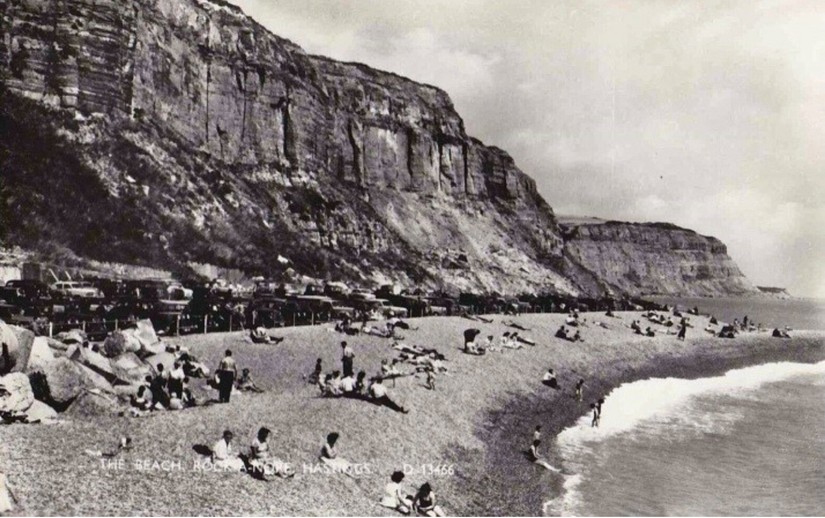
Gradually the dump was covered by shingle seen in 1959, as holiday makers returned to Hastings in droves.

Some blocks still visible in 2021, but with the tourists gone during the pandemic.
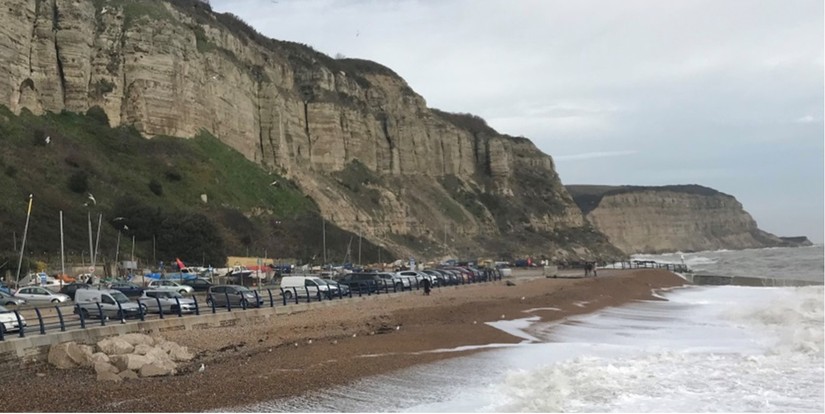
Inscribed lettering on one tank trap block (with 0.5m scale).
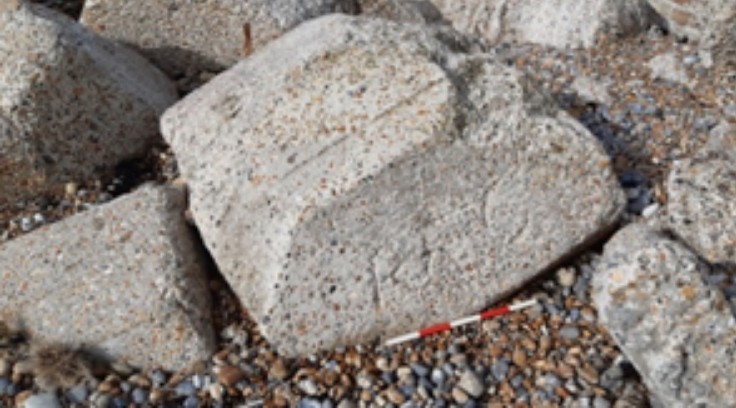
Further to the east, is another dump of 1940’s concrete tank trap blocks in amongst this spread of cliff fall and quay wall debris, serving as an anti-erosion device (c. CITiZAN).
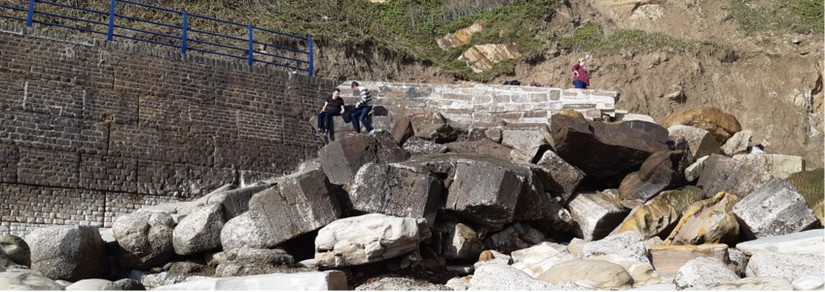
LONE SURVIVOR
Just one anti-tank block still survives in situ on the Hastings waterfront, a largely unremarked monument to the town’s darkest hour. But why was this one left when all the hundreds of others were removed?

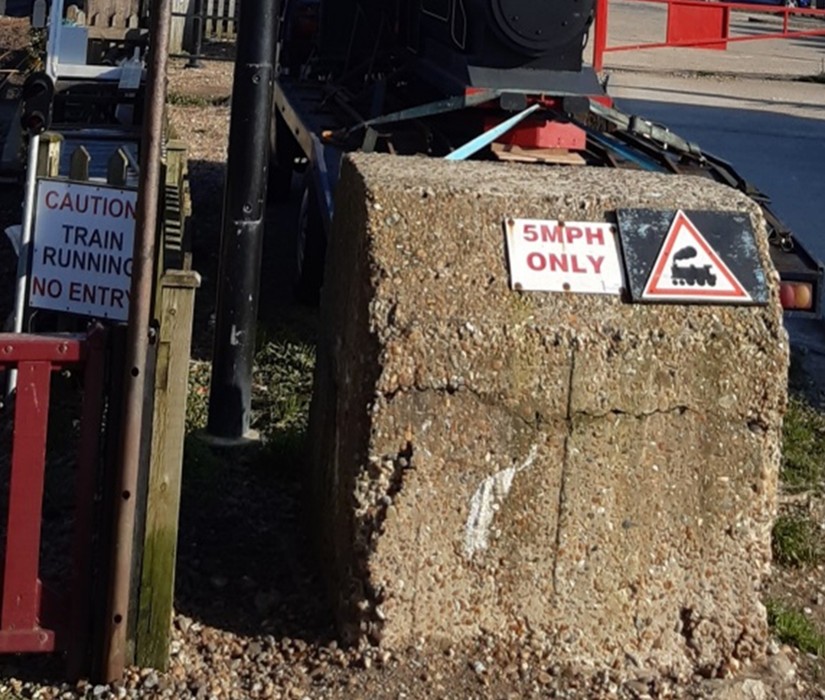
ALL CHANGE
Rather than guarding against a Nazi invasion, it stands sentinel (right) on a level crossing for the Hastings miniature railway. This popular attraction was opened in 1948 as the resort set about rebuilding its future on more peaceful lines ( c. CITiZAN).
